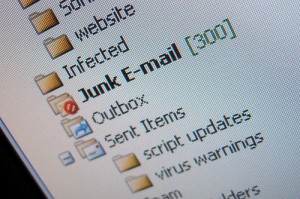 Every year we send out literally dozens of warning e-mails, and continue to do so, because despite the frequent warnings, people  still get caught falling for these tricks.Â
Every year we send out literally dozens of warning e-mails, and continue to do so, because despite the frequent warnings, people  still get caught falling for these tricks.Â
Take note of the following scam from fraudsters claiming to be from SARS.
Â
Emails are going out to university (and private addresses) seemingly coming from “SARS” informing them that they have a refund waiting for them. (Wow! a tax refund) Clicking on the hyperlink in the email takes you to a fake “e-filing” site that has hyperlinks for the four big South African banks and instructions to log on to your Internet banking site for “confirmation of your details”. When you follow the Nedbank link (as an example), you are taken to a copy of the Nedbank internet banking site that asks for profile, pin and password. Supplying these takes you to a second page that asks you for your mobile number. Submitting information on this page takes you to a page that requests the reference number sent to your cellphone.
Â
Do not authorise any cellphone message that comes through if you end up in the above situation. Furthermore, do not click on any hyperlinks in emails or divulge your account or mobile number details to anyone over the phone or via email.  Banks will never ask you to access internet banking through a link in an email, neither will banks ever ask for your mobile number when you access internet banking.
Another particulary sneaky phishing attack surfaced today.Â
It comes from “Linda Perez” and has a subject line of “Administrator (Sorry for the inconvenience)”Â
It asks you to contact the “sender” with your username and password so they can “expand your mailbox manually”Â
Of course this is a phishing attack, and you should never respond to such mails.Â
Do not respond, flag the sender as Junk Mail and delete the message.
ARTICLE BY DAVID WILES


 Every year you have to go to your doctor to get an anti-flu injection. You have to get one every year because the influenza virus mutates and adapts every year into a new strain. Computer viruses are exactly the same! Here are a few handy tips and hints to ensure the whole process is as painless as possible. But first things first –
Every year you have to go to your doctor to get an anti-flu injection. You have to get one every year because the influenza virus mutates and adapts every year into a new strain. Computer viruses are exactly the same! Here are a few handy tips and hints to ensure the whole process is as painless as possible. But first things first – The opposite of spam is, believe it or not, ham. In other words e-mails you WANT to receive.
The opposite of spam is, believe it or not, ham. In other words e-mails you WANT to receive. Since this morning (Thursday 17 May) a number of e-mails have been delivered into University accounts with a subject line of “USPS Shipment Info for 2351 3200 0122 9268 0611 3688”. The mail contains a cleverly disguised executable disguised as a web page or a document that when clicked or opened (the attachment) will modify the security settings in your Internet Explorer browser settings to allow criminals to gain access or control to your computer. If you get any mail with these sort of characteristics (often disguised as a USPS, UPS or international postal or courier services notification) please delete or quarantine the file. (Information supplied by David Wiles, Gerga)
Since this morning (Thursday 17 May) a number of e-mails have been delivered into University accounts with a subject line of “USPS Shipment Info for 2351 3200 0122 9268 0611 3688”. The mail contains a cleverly disguised executable disguised as a web page or a document that when clicked or opened (the attachment) will modify the security settings in your Internet Explorer browser settings to allow criminals to gain access or control to your computer. If you get any mail with these sort of characteristics (often disguised as a USPS, UPS or international postal or courier services notification) please delete or quarantine the file. (Information supplied by David Wiles, Gerga)